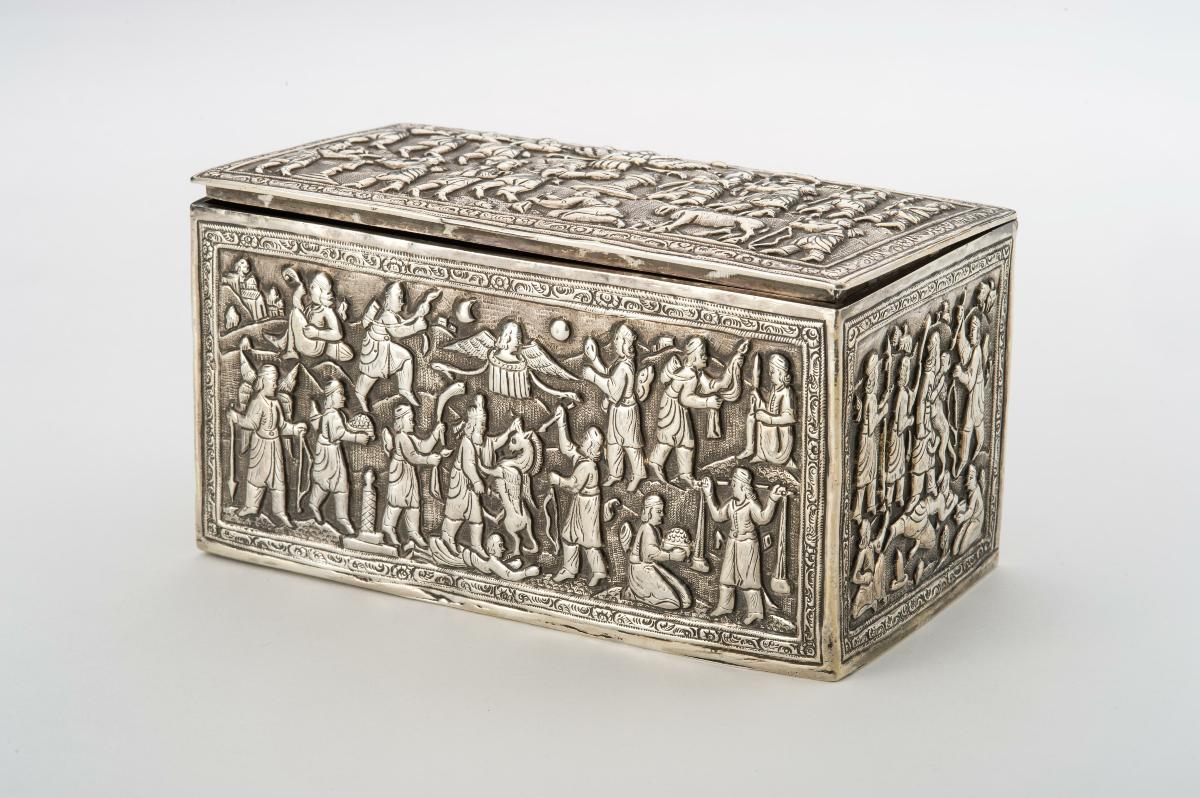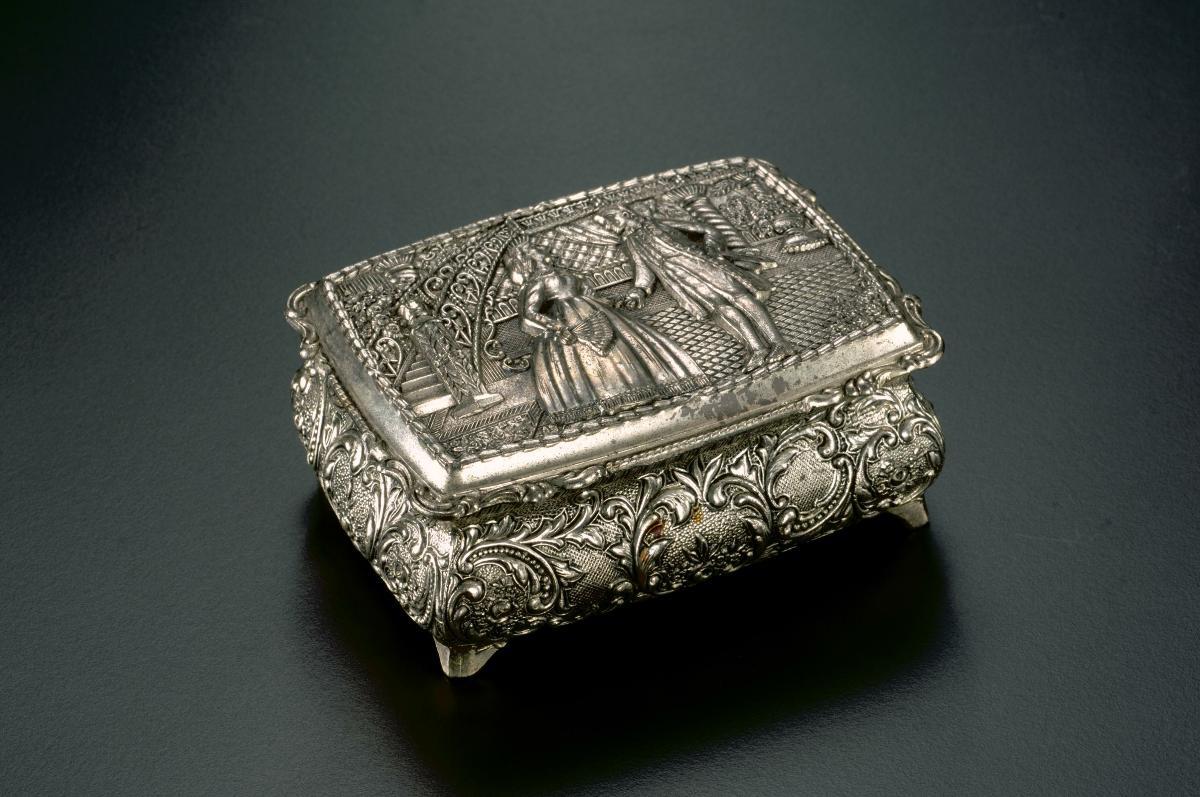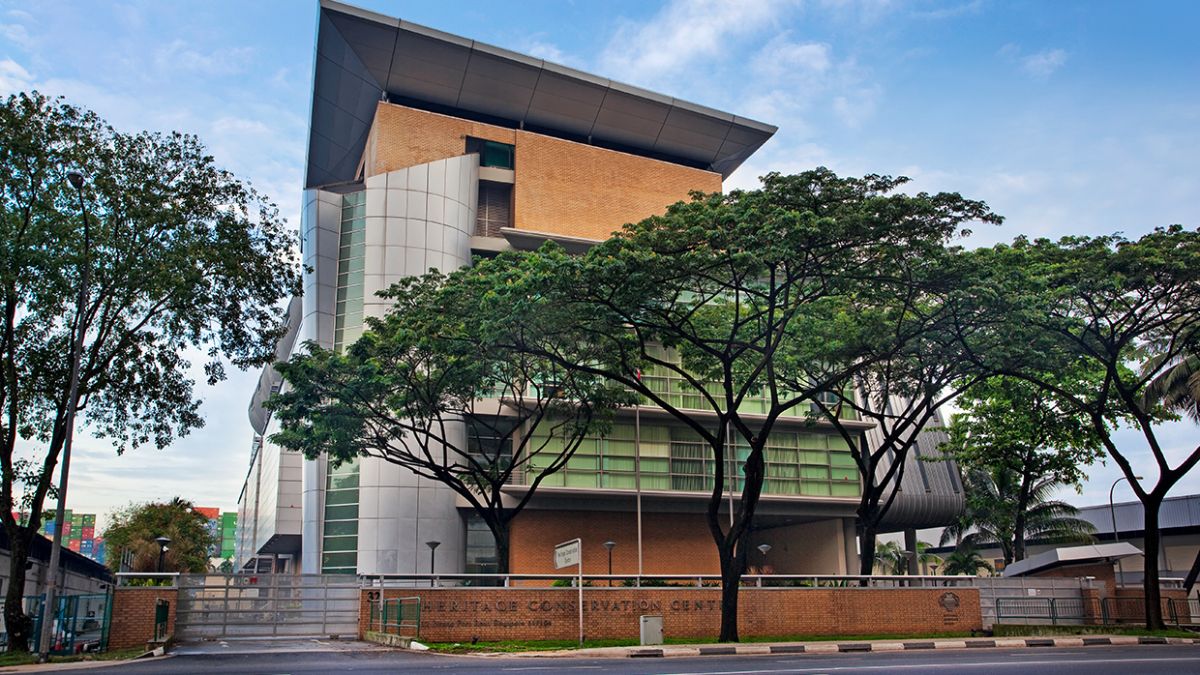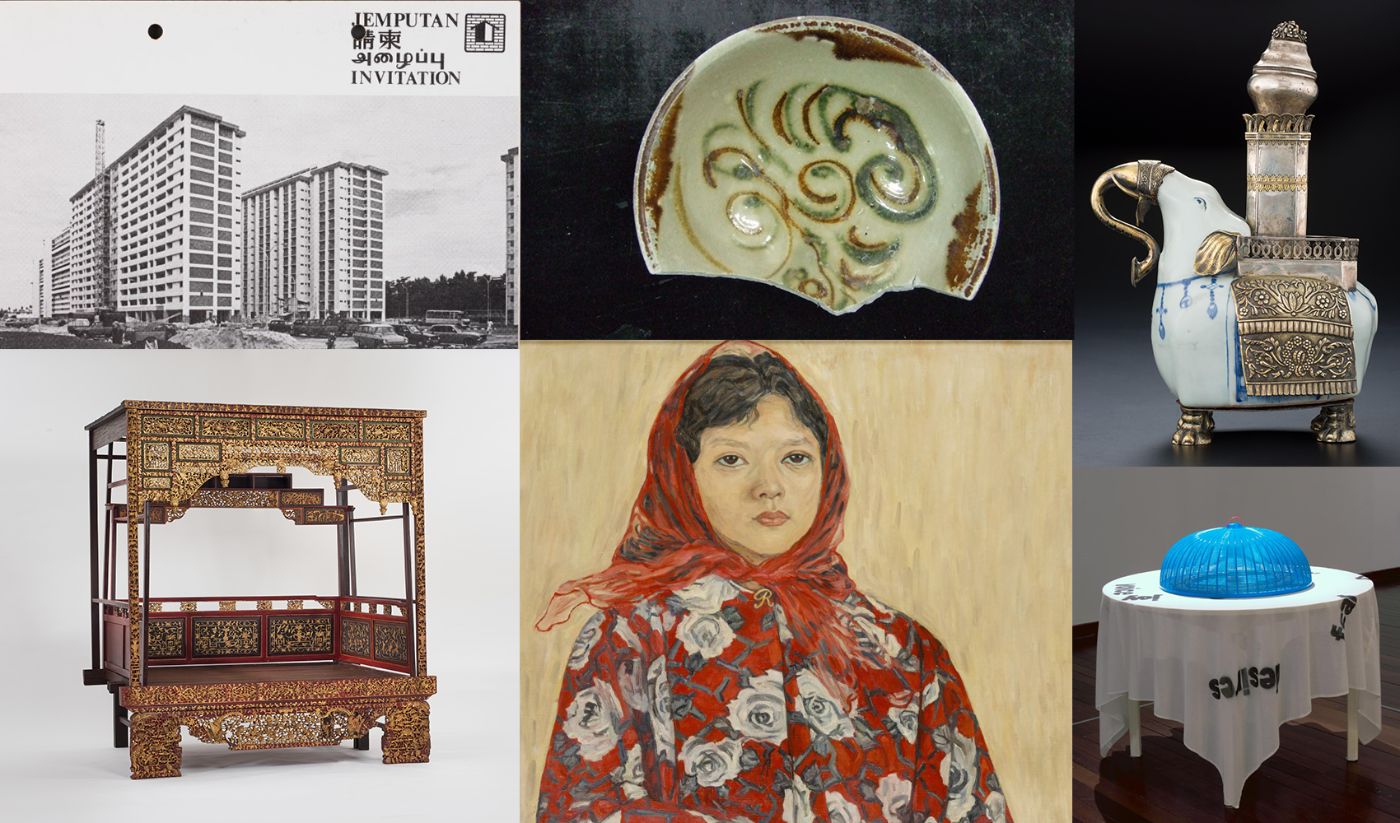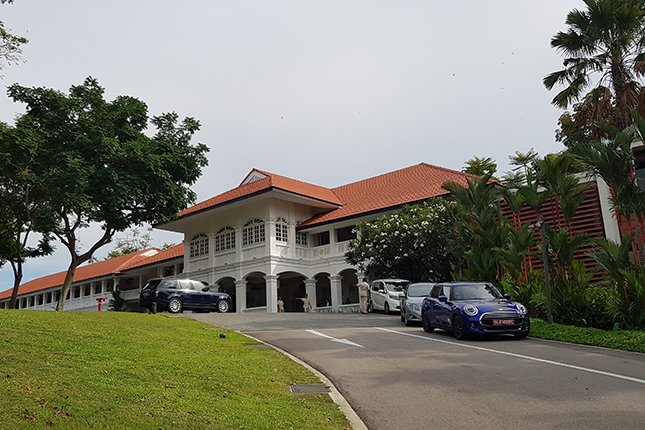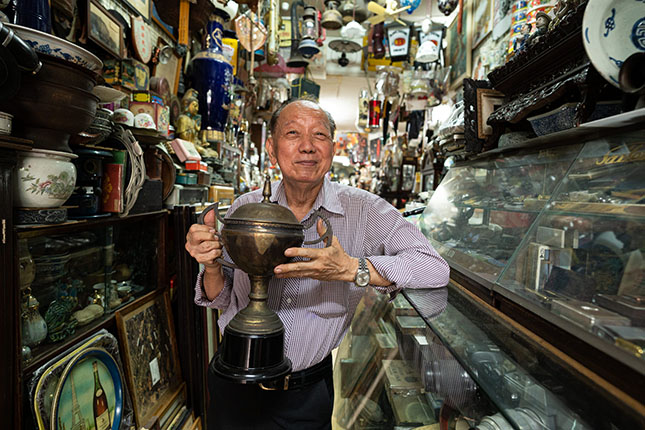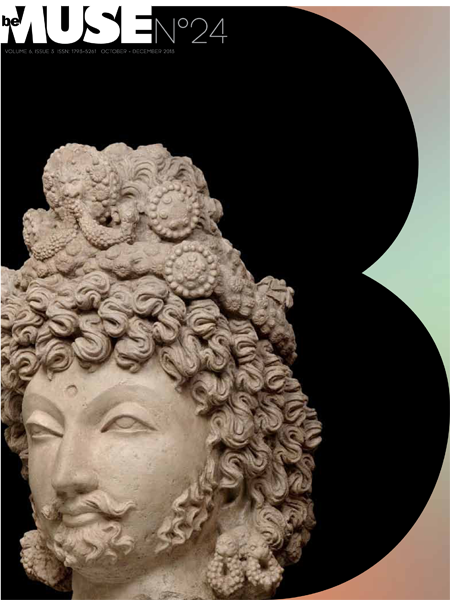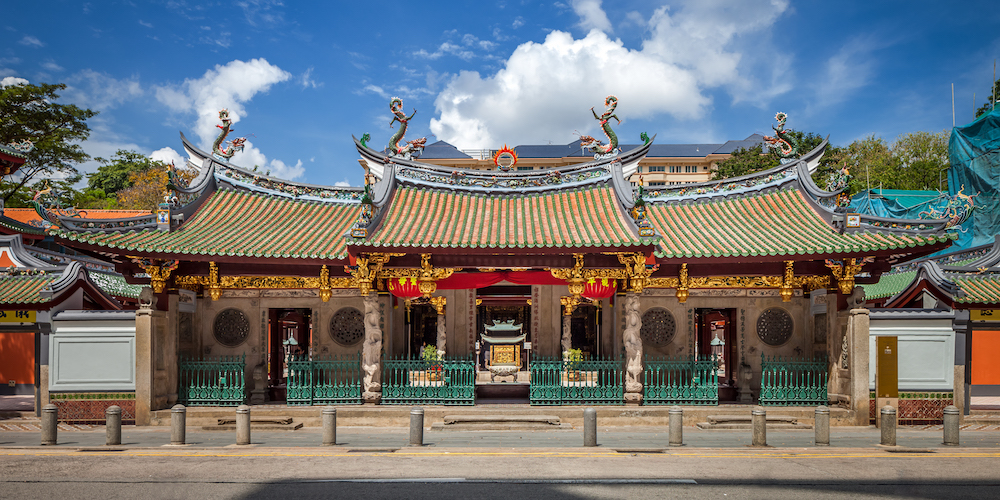Repousséd silver box showing Zoroastrian scenes, Bombay, 19th century, silver.
Collection of Indian Heritage Centre
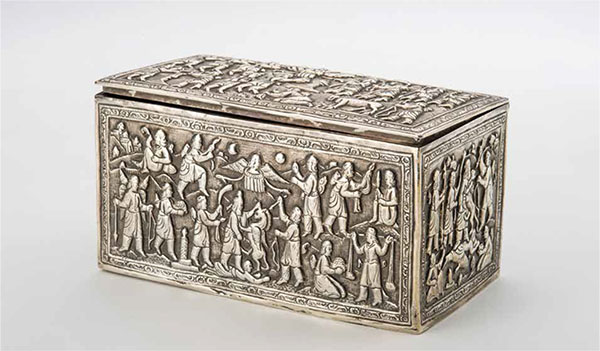
Parsi silver shops in Bombay and Gujarat supplied the Parsi community with ritual articles. In addition, silver items were imported from southern China as well. This box comprises four silver panels lined with an aromatic wood and a silver hinged cover; the silver is repousséd and chased with scenes relating to the Zoroastrian Parsis.
Depicted here are the deity Ahura Mazda and priests attending the sacred fire as well as a king- like figure shown sheltered under an umbrella accompanied by attendants carrying fly whisks. The use of the umbrella to denote kingship and the presence of the flywhisk is an Indian rather than a Persian practice. Inside, the box is split into two compartments by a silver partition. The base is plain, hammered silver.
Like the Jewish community, the Parsi community arrived in Singapore early in its history as a British colonial settlement. One of the most well-known Parsi merchants was Cursetjee Fromurzee, who, together with Englishman John M. Little, founded the department store, Little, Cursetjee & Co. (later John Little & Co.) at Raffles Place.
Zoroastrianism is one of the oldest religions in the world, originating in ancient Persia. The largest community of Parsis resides in the Indian port city of Mumbai, with Hong Kong also playing host to a large community in East Asia.
This is an extract from "The Singapore Story through 60 objects" written by Kennie Ting, Director, Asian Civilisations Museum and Peranakan Museum & Group Director of Museums, National Heritage Board. This article was first published in Cultural Connections Volume IV 2019 by Culture Academy Singapore.





